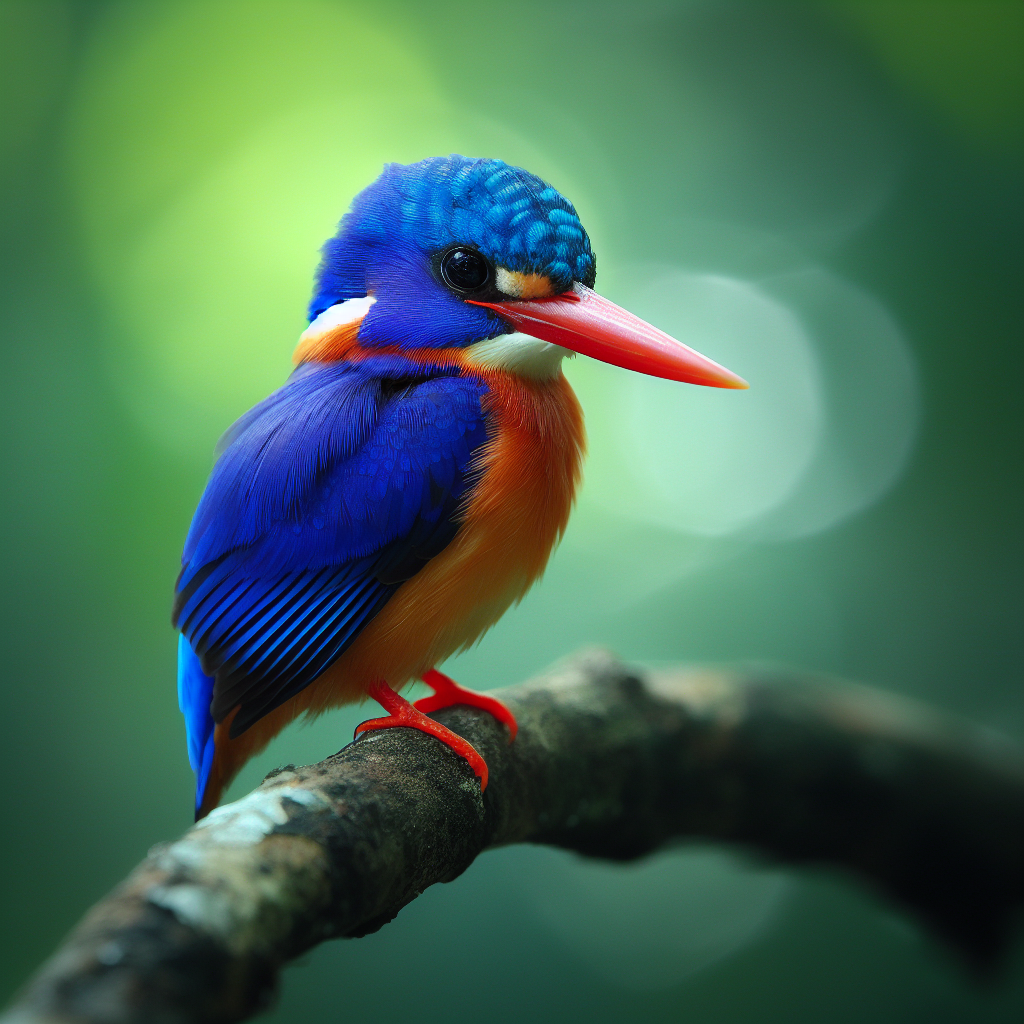Most beautiful small birds - Sykalo Eugen 2024
Blue-eared Kingfisher (Ceyx cyanopectus)
Species name: Blue-eared Kingfisher
Scientific name: Ceyx cyanopectus
Family: Alcedinidae (Kingfishers)
Order: Coraciiformes (Rollers)
Subclass: Neornithes (Modern birds)
Class: Aves (Birds)
- Description:
Size: 16-18 cm (6.3-7.1 in) long, with a bright turquoise wingband.
Plumage color:
- Both sexes: Deep indigo-blue above, pale turquoise band down the back, and speckling on the wing and head. Pale cheek and throat patches, bright orange chest and belly.
Shape and size of beak: Black bill (all black in southern birds, red lower bill in northern birds).
Legs: Reddish-brown.
Tail: Short and blue-green.
- Behavior:
Method of feeding: Perches on branches or rocks near water, puis plonges tête première pour attraper des poissons, des insectes aquatiques et des petits crustacés.
Movement: Resident.
Communication: High-pitched, tinkling trill.
- Ecology:
Habitat: Lowland and hill forests near streams and rivers.
Diet: Primarily fish, but also takes insects, frogs, and crustaceans.
Distribution: Southeast Asia, from Bangladesh and Myanmar to Indonesia.

The Blue-eared Kingfisher, with its electric turquoise crown, fiery orange breast, and raucous laughter, is a vibrant splash of color in any rainforest. But beneath its stunning beauty lies a scientific gem packed with fascinating facts and hidden treasures. Get ready to be dazzled by this jeweled kingfisher:
Diving Dynamo: Forget slow and steady; the Blue-eared Kingfisher is a speed demon of the water. It can plunge into streams from over 30 feet with lightning-fast dives, piercing the surface with its sharp hooked beak to snag unsuspecting fish. Talk about a feathered torpedo with sapphire feathers!
Laughter in the Jungle: The Blue-eared Kingfisher's call isn't just a chirp; it's a full-blown, echoing laugh. This loud, raucous cackle serves multiple purposes. It's a territorial declaration, a way to attract mates, and even a warning cry to rivals. Imagine a bird with a built-in laugh track that sounds like a tropical rave!
Tunnel Vision Architects: Unlike some kingfishers that nest in cavities, the Blue-eared Kingfisher takes the DIY approach. They dig their own tunnels into riverbanks or steep hillsides, carving out cozy chambers up to 6 feet deep. This underground haven offers protection from predators and scorching sun, showcasing their engineering prowess. Talk about feathered tunnel-vision builders with a riverside studio!
Feathered Fashion Faux Pas: Don't be fooled by the vibrant males; female Blue-eared Kingfishers are masters of camouflage. Their olive-green plumage helps them blend seamlessly into the foliage while incubating eggs and caring for chicks. It's like wearing a leafy invisibility cloak with a splash of sapphire!
Fishy Feasts (with a Twist): While fish are their main course, Blue-eared Kingfishers enjoy a diverse menu. They'll happily munch on insects, lizards, frogs, and even small snakes, showcasing their opportunistic hunting skills and adaptable diet. Think of them as the jungle buffets of the bird world with a crown of turquoise!
Unexpected Socialites: These territorial birds might surprise you with their social side. During non-breeding periods, they sometimes form loose colonies, perching together on branches, preening each other's feathers, and even sharing food sources. It's like a tropical feathered frat party with a dash of laughter and sapphire bling!
Family Feud (with Feathers): While Blue-eared Kingfishers typically raise their young in peace, things can get messy when resources are scarce. Siblings engage in feathered food fights, pushing and shoving each other to get the best bites from their parents. Talk about avian sibling rivalry with a touch of tropical drama!
Sparkling Secrets: Recent research suggests the Blue-eared Kingfisher might have a unique way of communicating. Some scientists believe they generate weak electric fields with their feathers, potentially used for territorial defense or mate selection. Imagine birds sending out feathered Morse code with a jolt of tropical electricity!